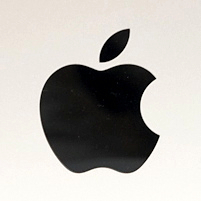/* *****************************************************************
* Webserver - the basic functions
* *****************************************************************
*/
//-------------------
void checkForClient(){
EthernetClient client = server.available();
if (client) {
Serial.println(F("\n[server] client connected"));
uint8_t i = 0; // index / current read position
const uint16_t buffersize = 100; // size of read buffer (reads a complete line) (if larger than 255, modify i also!
const uint16_t smallbuffersize = 30; // a smaller buffer for results
char lineBuffer[buffersize] {'\0'}; // buffer for incomming data
char method[8]; // largest one 7+1. HTTP request methods in RFC7231 + RFC5789: GET HEAD POST PUT DELETE CONNECT OPTONS TRACE PATCH
char uri[smallbuffersize]; // the requestet page, shorter than smallbuffersize - method
char requestParameter[smallbuffersize]; // parameter appended to the URI after a ?
char postParameter[smallbuffersize]; // parameter transmitted in the body / by POST
enum class Status {REQUEST, CONTENT_LENGTH, EMPTY_LINE, BODY};
Status status = Status::REQUEST;
const size_t MESSAGE_BUFFER_SIZE = 64; // size of buffer for StreamLib
char buffer[MESSAGE_BUFFER_SIZE]; // a buffer for the StreamLib
BufferedPrint message(client, buffer, sizeof(buffer)); // the StreamLib object to replace client print
while (client.connected()) {
while (client.available()) {
char c = client.read();
Serial.print(c); // Debug print received characters to Serial monitor
if ( c == '\n' ){
if (status == Status::REQUEST){ // read the first line
//Serial.print(F("lineBuffer="));Serial.println(lineBuffer);
// now split the input
char *ptr;
ptr = strtok(lineBuffer, " "); // strtok willdestroy the newRequest
strlcpy(method, ptr, smallbuffersize);
Serial.print(F("method=")); Serial.println(method);
ptr = strtok(NULL, " ");
strlcpy(uri, ptr, smallbuffersize); // enthalt noch evtl. parameter
if (strchr(uri, '?') != NULL){
ptr = strtok(uri, "?"); // split URI from parameters
strcpy(uri, ptr);
ptr = strtok(NULL, " ");
strcpy(requestParameter, ptr);
Serial.print(F("requestParameter=")); Serial.println(requestParameter);
}
Serial.print(F("uri=")); Serial.println(uri);
status = Status::EMPTY_LINE; // jump to next status
}else if (status == Status::CONTENT_LENGTH){ // MISSING check for Content-Length
status = Status::EMPTY_LINE;
}else if (status > Status::REQUEST && i < 2){ // check if we have an empty line
status = Status::BODY;
}else if (status == Status::BODY){
strlcpy(postParameter, lineBuffer, smallbuffersize);
break; // we have received one line payload and break out
}
i = 0;
strcpy(lineBuffer, "");
}else{
if (i < buffersize){
lineBuffer[i] = c;
i++;
lineBuffer[i] = '\0';
}
// MISSING wenn status 3 und content-length --> abbrechen.
}
}
if (status == Status::BODY){ // status 3 could end without linefeed, therefore we takeover here also
strlcpy(postParameter, lineBuffer, smallbuffersize);
}
Serial.print(F("postParameter=")); Serial.println(postParameter);
// Simple evaluation of postParameter from body
// Post data looks like pinD2=On
//文字列処理に注意
if ( strncmp( postParameter, "pinD", 4) == 0 ) {
byte index1 = postParameter[4] - 0x30; // Convert ascii to int
byte index2 = postParameter[5] - 0x30;
byte index = index1 * 10 + index2;
Serial.println(index);
if ( strncmp( postParameter + 6, "=On", 3) == 0 ) {
digitalWrite(index, HIGH);
}else if ( strncmp( postParameter + 6, "=Off", 4) == 0 ) {
digitalWrite(index, LOW);
}
}
// send back a response
if (!strcmp(uri, "/")) // the homepage
sendPage(message);
else if (!strcmp(uri, "/1.htm"))
sendPage1(message);
else if (!strcmp(uri, "/1.js"))
sendJs(message); // javascript calling JSON request
else if (!strcmp(uri, "/1.json")) // send data as json
sendJson(message);
else if (!strcmp(uri, "/favicon.ico")) // a favicon
//sendFavicon(client);
send204(message); // if you don't have a favicon, send a defined empty response
else // if the page is unknown, send HTTP response code 404
send404(message);
message.flush();
client.stop();
}
}
}
//----------------------
void sendPage(BufferedPrint &message){
// Serial.println("[server] 200 response send");
message.println(F("HTTP/1.0 200 OK\r\n" // \r\n header fields are terminated by a carriage return (CR) and line feed (LF) character sequence.
"Content-Type: text/html\r\n" // The media type of the body of the request (used with POST and PUT requests).
"\r\n" // a blank line to split HTTP header and HTTP body
"<!doctype html>\n" // the HTTP page itself
"<html lang='en'>\n"
"<head>\n"
"\t<meta charset='utf-8'>\n"
"\t<meta name='viewport' content='width=device-width'>\n"
"\t<title>Webserver as pin controller</title>\n"
"</head>\n"
"<body style='font-family:Helvetica, sans-serif'>\n" // a minimum style to avoid serifs
"<h1>Webserver as pin controller</h1>\n"
"<p>Buttons turn pins on or off</p>\n"
"<form method='post' action='/' name='pins'>"));
for (auto &pin : ledPin){
//client.print(F("<p>"));
message.print(pin);
message.print(F(" <input name='pinD"));
message.print(pin);
message.print(F("' type='submit' value='On'>"));
message.print(F("<input name='pinD"));
message.print(pin);
message.print(F("' type='submit' value='Off'>"));
if (digitalRead(pin)) message.print(F(" active")); message.print(F( "<br>\n"));
}
message.print (F("</form>\n"));
message.print (F("</body>\n</html>"));
message.flush();
}
//--------------------
void send404(BufferedPrint &message){
// Serial.println("[server] response 404 file not found");
message.println(F("HTTP/1.0 404 Not Found\r\n"
"Content-Type: text/plain\r\n" // we will send a simple plain text without html tags
"\r\n"
"File Fot Found"));
message.flush();
}
//--------------------
void send204(BufferedPrint &message){
// Serial.println("[server] response 204 no content");
message.println(F("HTTP/1.0 204 no content\r\n")); // no content
message.flush();
}
//--------------------
void sendFavicon(EthernetClient &client){
client.println("HTTP/1.0 204 no content\r\n");
}
